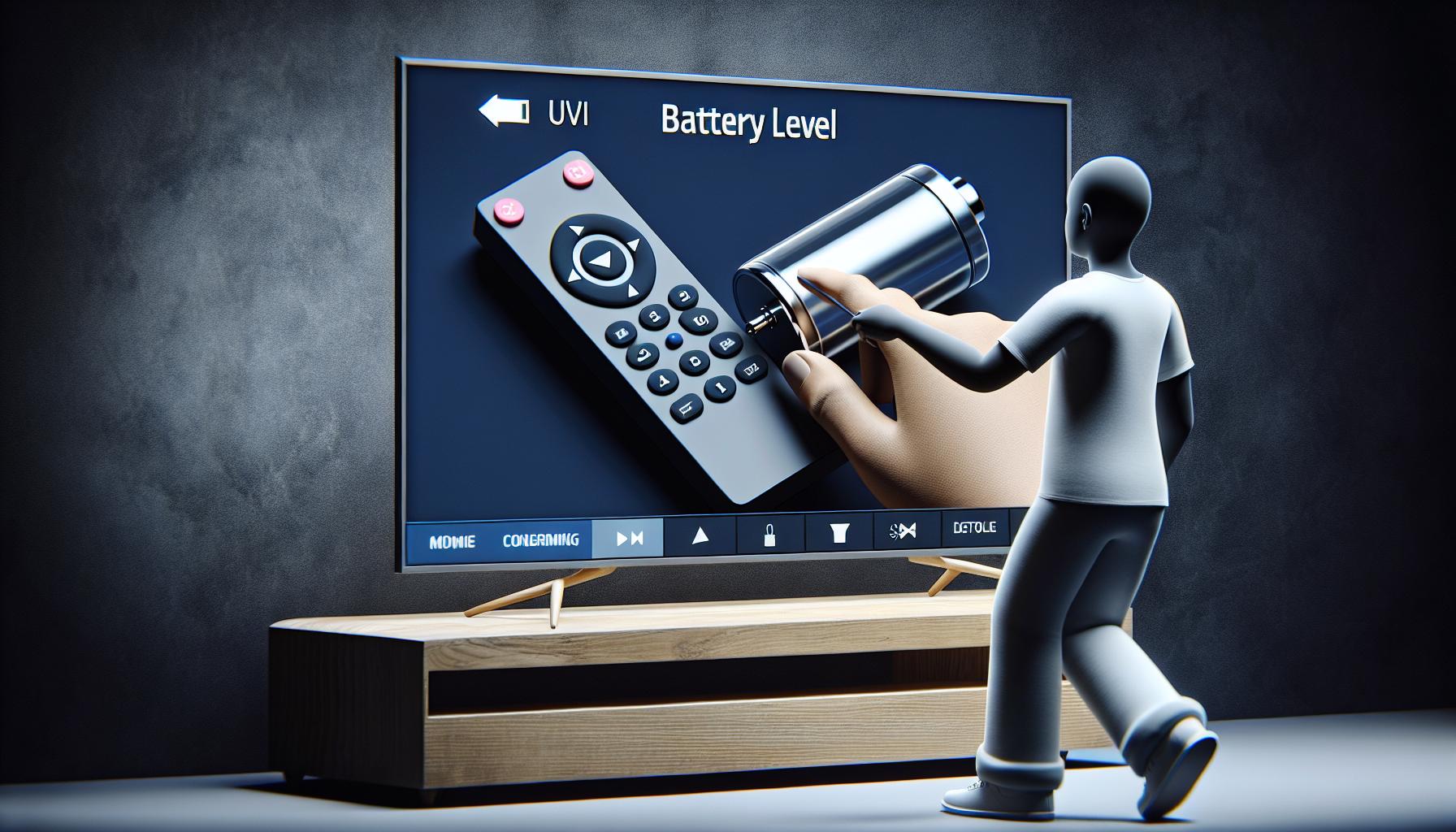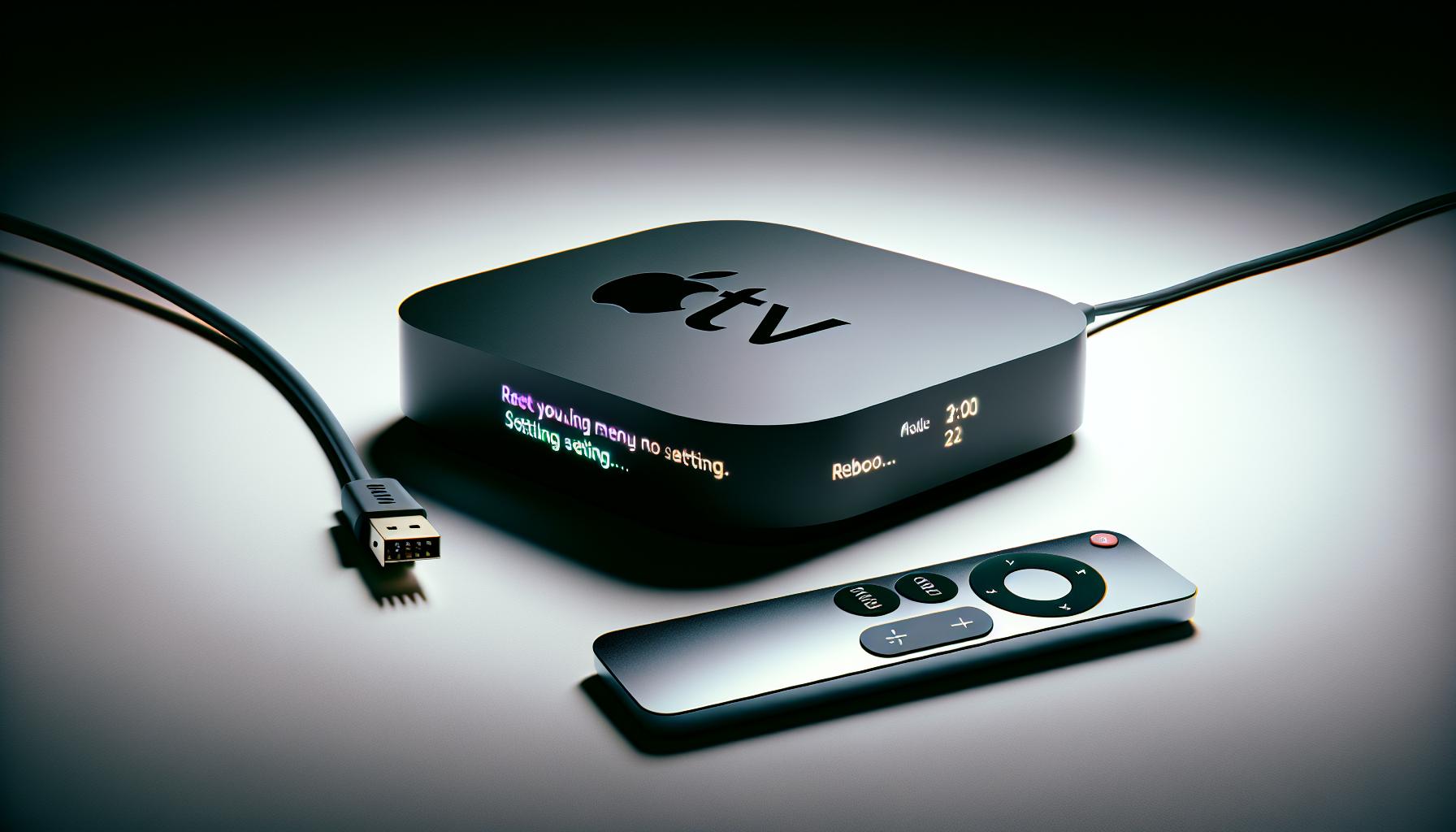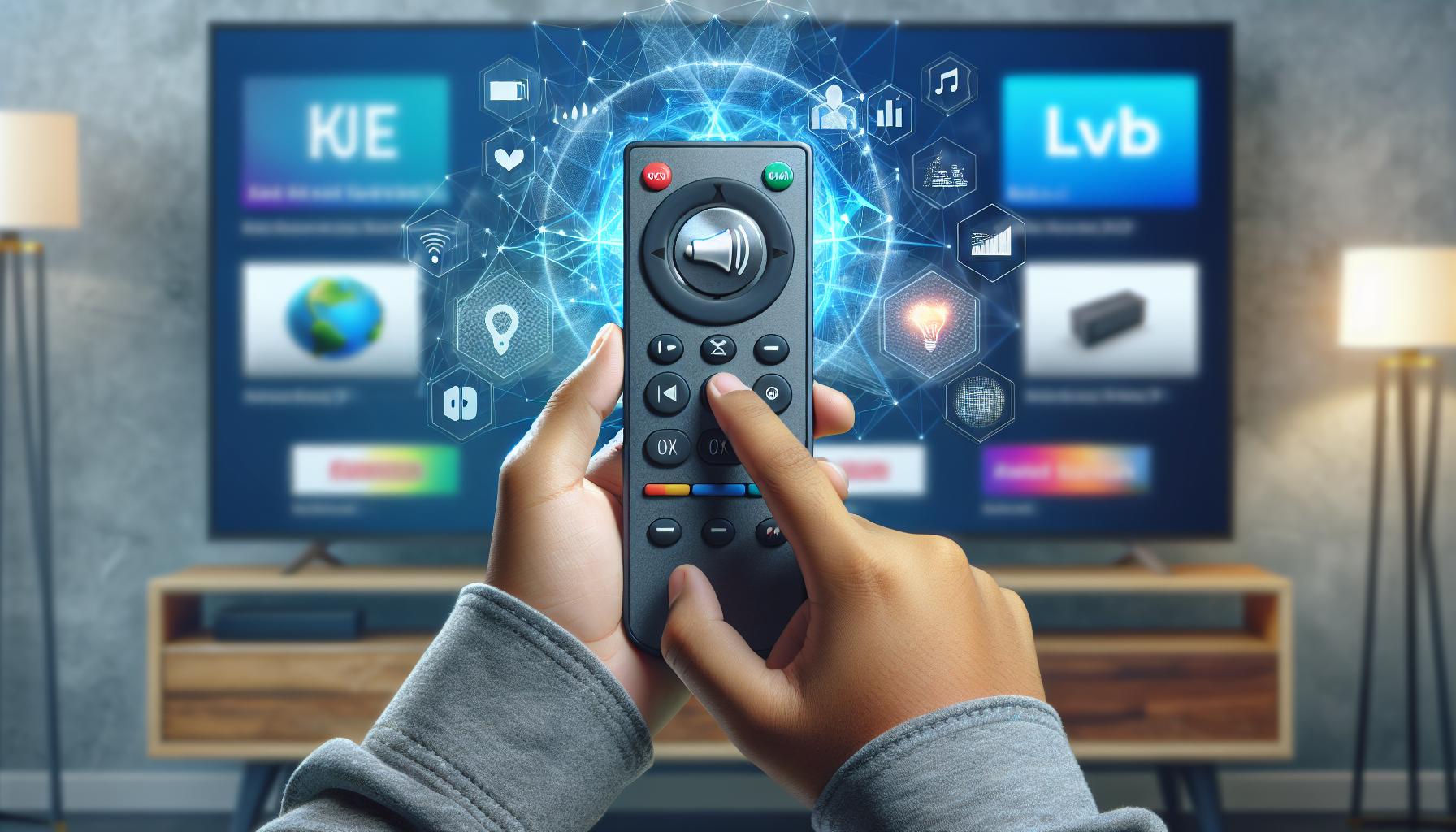Ever found yourself in the middle of your favorite show, and suddenly, your Apple TV remote's volume control stops working? It's a common issue that can be a real buzzkill. But don't fret! You're not alone and we've got you covered.
Common Volume Issues on Apple TV Remote
Isn't it frustrating when your Apple TV remote volume doesn't seem to respond? You're not alone. Many users face a variety of volume issues with their Apple TV remote. Here, we'll dive into some of them, their probable causes, and potential fixes.
One commonly encountered glitch is the volume not adjusting up or down even with repeated clicks on the volume button. It can be linked to software glitches, low remote battery, or a pairing issue between the device and the remote.
Another problem you might face is the volume automatically reducing or increasing by itself, without any voluntary input from you. It may sound eerie, but this issue is mostly not ghost-related, rest guaranteed. It often results due to incorrect settings on your Apple TV or interference from other remote devices in your vicinity.
A lot of users also report that the mute button on the remote stops functioning. Similar to the unresponsive volume control, this could be caused by a software glitch or a pairing problem between your remote and your Apple TV.
Let's take a quick glance at these common volume issues, their possible causes, and the subsequent sections where we'll discuss solving these:
| Common Volume Issue | Possible Cause | Solution Section |
|---|---|---|
| Unresponsive volume control | Software glitch, low battery, pairing issue | Advanced Troubleshooting Your Apple TV Remote |
| Automatic volume adjustment | Incorrect settings, other remote interference | Setting Adjustments for Apple TV |
| Non-functional mute button | Software glitch, pairing problem | Advanced Troubleshooting Your Apple TV Remote |
Given this, understanding these common volume issues can equip you in identifying the root cause and speed up the troubleshooting process. To address them, continue on to the next section where we give a step-by-step guide on how to solve each problem. Don't worry, we're with you every step of the way to ensure your viewing experience is back to normal in no time flat. So, let's move on to how we can fix these issues. Don't forget, your Apple TV experience should be seamless and enjoyable.
Troubleshooting Steps for Apple TV Remote Volume Control

Got problems in controlling your Apple TV remote volume? There's a good chance you're experiencing a glitch tied to system settings or the remote's battery life. Let's break this down.
Refreshing System Settings
Apple TVs, like any electronic device, aren't immune to software glitches that cause erratic behavior. Refreshing system settings can often resolve the issue, so don't overlook this actionable step.
- Start by unplugging your TV and Apple TV from the power source.
- Wait for approximately a minute before plugging them back in.
- Check if your remote's volume control is now operating as expected.
Still no changes? Let's check out the next troubleshooting method.
Check Battery Levels
Low battery levels in your remote can lead to less responsive controls. In many instances, it's a low battery causing the problem. A simple battery replacement might be all that's needed.
- Press and hold the remote's menu button to check the battery level.
- If it's running low, switch the old batteries for new ones.
This might be the fix you're looking for. If not, we're not out of options!
Re-Pairing the Remote
Pairing issues could be causing your Apple TV remote volume to not adjust properly. Try unpairing and re-pairing your device to nip this in the bud.
- Go to settings on your Apple TV.
- Select "Remotes and Devices".
- Click on "Unpair Apple TV remote".
- Re-pair the device following Apple's guidelines.
Correctly pairing your Apple TV Remote can oftentimes rectify volume control issues, making it a troubleshooting step worth trying. Remember, it's not always a hardware issue, sometimes it's merely a programming glitch that needs a quick reset.
Resolving Interference
In some cases, other remote devices in your vicinity could interfere with your Apple TV remote's signals. Keeping other devices away from the remote could make all the difference. Take a moment to reposition such items and attempt to use your remote again.
While frustrating, volume control issues on Apple TV remotes are common, and troubleshooting is often a straightforward process. Keep trying out these options and you'll most likely get your remote back in proper working order. Remember, patience and a little tech understanding can go a long way.
Step 1: Check the Batteries

When your Apple TV remote isn't functioning as it should be, it's easy to assume the worst. However, common volume control issues often stem from simple factors. The first thing to cross off the list is the battery level in your remote.
A drained battery can cause your Apple TV remote to behave erratically or to not respond at all. It's important to remember that a remote with low battery has less power to transmit signals to your TV, and therefore might seem to have volume control issues.
To check the battery level for a Siri Remote or Apple TV Remote:
- Navigate to Settings on your Apple TV screen.
- Select Remotes and Devices.
- Choose Remote in the connected devices.
If the battery level is low, you'll be prompted to charge your remote. Simply connect your remote to a computer or power adapter using the lightning to USB cable. Wait for a couple of hours until the remote is fully charged before testing the volume controls again.
On the other hand, if you have an Apple TV Remote (white or aluminum), you'll need to replace the battery. To do this:
- Turn the remote control over to see the battery compartment.
- Use a coin to turn the battery cover counterclockwise until the battery compartment is visible.
- Remove the old battery and insert a new CR2032 or BR2032 lithium 3V coin battery.
Here's a tip: always make sure the battery is facing the right way when inserting it. The positive side (marked with a "+") should be facing up.
With a fresh or fully charged battery in place, test out the volume controls on your Apple TV remote. If the problem persists, you might need to consider other potential issues like interference or a need to re-pair devices. But no worries, we'll walk you through these steps in the subsequent sections of this guide.
Step 2: Verify the Volume Control is Set to Apple TV

Continuing with the troubleshooting process, it's important to ensure that the volume control on your Apple TV remote is configured correctly. Every device has a slightly different setup and the Apple TV remote is no exception. You'll need to check that your remote's volume is indeed set to control your Apple TV. Mistakenly, it could be set to control another device, which could be the root of your volume control woes.
First, navigate to the "Settings" menu on your Apple TV. This can be done using your Apple TV remote, or even the Apple TV Remote app on your iPhone if it's already paired with your TV. Great part about Apple's ecosystem is how interconnected devices are, making processes like this one a breeze.
Once you're in "Settings", you'll need to follow these steps:
- Go to "Remotes and Devices"
- Choose "Volume Control"
- Ensure "Auto" is selected, or select the correct device if needed
This route ensures your Apple TV remote is set to control the volume of your TV or home theater, depending on configuration.
Remember that the setup might slightly differ depending on the version of tvOS you're using and the model of your Apple TV. Some versions may not have the "Auto" option. But don't fret - with the basics covered here, you're well-equipped to navigate the slight variations you might encounter.
There's another scenario to consider. It's possible that your Apple TV isn't configured to control your television's volume through HDMI-CEC. Without getting too technical, HDMI-CEC allows devices connected through HDMI to control each other. If this function is not enabled, your Apple TV remote might be unable to control the volume. In the "Settings" menu, under "Remotes and Devices", find the option "Control TVs and Receivers" and ensure it's set to 'On'.
It's clear how this step in your troubleshooting venture tackles a vital part of the process - configuring the volume control. Now, onto the next section where another potential solution is waiting for you...
Step 3: Restart Your Apple TV

You've assessed your remote settings and verified it's set to control your Apple TV. However, the volume control issue persists, so it's time to delve deeper. A common remedy you might not have thought about is a good old-fashioned reset. This solution works for a multitude of tech problems and just might be the perfect fix for your Apple TV remote volume issue.
Performing a restart is a simple process. You might be wondering why this could resolve the problem. Well, restarting the device can clear temporary files and close applications running in the background. These might possibly affect your volume control. Thus, performing a restart not only works wonders on computer systems, smartphones, and other devices but also on Apple TV.
Don't worry - restarting your Apple TV doesn't erase any settings, apps, or data. You're just giving your device a fresh start.
You can restart your Apple TV in two simple methods - through the Apple TV settings or by unplugging it.
- Via Settings: Navigate to Settings > System > Restart. After a successful restart, test your volume control to see if the issues are resolved.
- Unplugging Method: Unplug your Apple TV from the power source, wait for about one minute, then plug it back in. Just make sure to not rush the process. Let your Apple TV take a minute to cool down and reboot. You don't need to hurry.
Post restarting, check if the volume control issue has improved. If it still continues, well, you still have other steps to try out. Following the right troubleshooting techniques will eventually lead you to the solution. Stay tuned for more.
Step 4: Update Your Apple TV Software
If you're still having trouble with your Apple TV remote volume control, updating your Apple TV software might be able to solve the issue. Apple frequently releases updates for its software, fixing bugs and introducing new functionalities. Following are the steps to help you navigate through the process.
First, on your Apple TV, navigate to Settings — It's the gear icon located usually on the second row of icons. Then, choose System. Scroll down to Software Updates and select it. Finally, choose Update Software.
If there's an update available, your Apple TV will download and install it. Ensure your Apple TV is connected to Wi-Fi during this process. Unstable or slow internet possession can cause installation errors.
Take note, the time it takes to update your Apple TV can vary based on your internet speed and the size of the update. Be patient while your device completes the update. Post update, test your Apple TV remote volume issue once again.
However, if the option Update Software is grayed out, it means your Apple TV is up to date, and there are no new updates available. You'll have to look further into other correction methods then.
It's vital to note that older Apple TV models, like Apple TV 1st and 2nd Generation, may no longer receive software updates. Hence, troubleshooting methods for these models are limited to system restarts or physical remote repairs.
To ensure the best performance and features from your Apple TV, it's recommended to always have your Apple TV running on the latest software.
Step 5: Reset Your Apple TV Remote
If software updates didn’t solve your problem, resetting your Apple TV remote might be an effective solution. It's worth mentioning that there are different methods of resetting for various models of Apple TV Remotes.
For Siri Remote or Apple TV Remote with Home button, here are some simple steps to reset it:
- Press and hold the Menu button and the Volume Up button for 2-3 seconds.
- Release both buttons at the same time.
- Wait for your remote to reset.
If you're using an Apple Remote (Aluminum or White model), follow these steps to reset:
- Hold down the Menu button and Left button for six seconds.
- Let go both buttons simultaneously.
- Wait a few seconds for your remote to reset.
You may notice noticeable changes in the responsiveness and functions of the remote post-reset. It's crucial to re-pair your Apple TV Remote after resetting.
Re-pairing your Siri Remote or Apple TV Remote involves:
- Making sure your Apple TV is awake.
- Holding your remote 3 inches away from your Apple TV.
- Pressing and holding your remote's Menu and Volume Up buttons for five seconds.
- If asked, place your remote on the Apple TV.
To re-pair the Apple Remote, use these steps:
- Point your remote three inches away from your Apple TV.
- Press and hold the Menu button and the Right button for six seconds.
- If asked, place your remote on the Apple TV.
With these tweaks, you're paving the way for effective volume control with your Apple TV Remote.
Step 6: Contact Apple Support

If all the above solutions don't resolve the Apple TV remote volume issue, don't hesitate to reach out to Apple Support. Apple's technical support team is renowned for its problem-solving capabilities and customer service.
To contact Apple Support,
- Visit the Apple Support website.
- Choose Apple TV from the list of products.
- Select Controllers & Remotes.
- Click on "Connect With Us" or "Speak to Apple Support Now".
You can also use the Apple Support app on your iPhone or iPad. The app makes it easy to communicate with support staff. It includes handy features like scheduling call-backs at your convenience and pre-checks that help speed up troubleshooting.
When you get in touch with Apple Support, make sure to:
- Be prepared with your Apple TV model and serial number. You can typically find this on the device itself or in the settings menu.
- Clearly describe your remote's behavior and the troubleshooting steps you've already taken.
- Follow the given instructions precisely.
If your Apple TV remote is under warranty, Apple may replace it at no cost to you. If it's outside of warranty, they’ll provide a quote for the cost of a replacement.
Sometimes, phone-based support can't solve the problem. If that's the case, you may need to schedule an appointment at your local Apple Store or certified service provider. Be aware, though, there may be a charge for in-person service if your remote is not under warranty.
All in all, Apple Support provides serious help for tough Apple TV remote issues. Making contact with them will help you to resolve your problem once and for all.
Conclusion
So, you've done your bit. You've tried to troubleshoot your Apple TV remote's volume control issues and you've been thorough. If the problem persists, don't worry. It's time to reach out to Apple Support. They're known for their effective help and they're ready to assist you. Whether it's through their website or the Apple Support app, they're just a few clicks away. Remember to have your Apple TV model and serial number handy and be ready to describe your remote's behavior and the steps you've taken. If your remote is still under warranty, you might even get a free replacement. If it's not, they'll provide a quote. In some cases, you might need an in-person appointment. But rest assured, you're not alone in this. With Apple's support, you're on your way to fixing your Apple TV remote volume issue.
What should I do if the troubleshooting steps didn't fix my Apple TV remote volume issue?
If you're unable to resolve the issue after completing the troubleshooting steps, you should contact Apple Support for further assistance. You can do this through their website or by using the Apple Support app.
Where can I find my Apple TV model and serial number?
You can find these details in the Settings menu of your Apple TV. It's important to have this information on hand when you contact Apple Support, as they will need it to assist you more effectively.
Can I have my Apple TV remote replaced for free?
While under warranty, your Apple TV remote can be replaced for free. If it's not under warranty, Apple Support will advise you on the replacement cost.
What if my remote needs in-person service?
If your remote needs in-person service, you might need to book an appointment at an Apple Store or a certified service provider. If the remote isn't under warranty, there could be charges for this service.
How effective is Apple Support in helping with Apple TV remote issues?
Apple Support is well noted for its effectiveness in addressing Apple TV remote-related issues. They have the resources and expertise needed to assist you with any problems.




